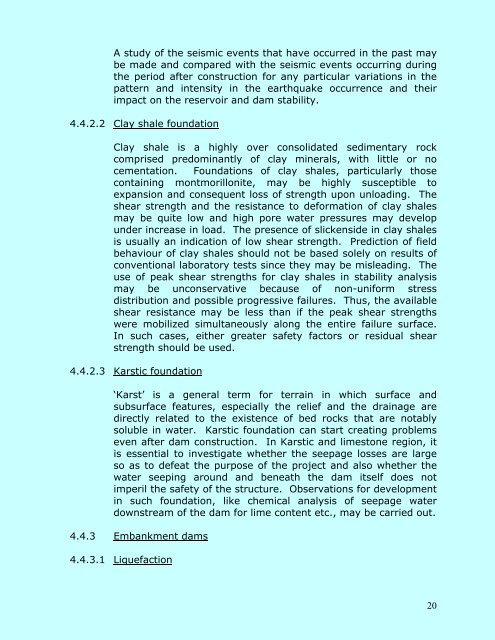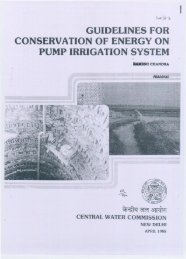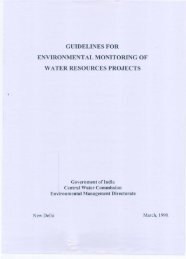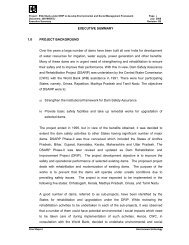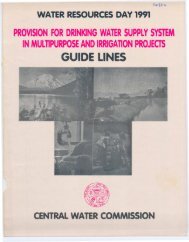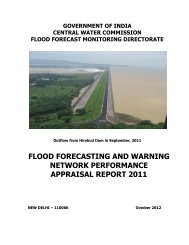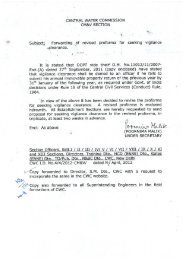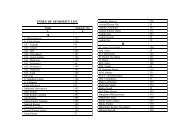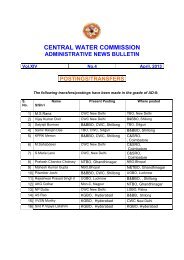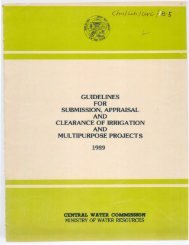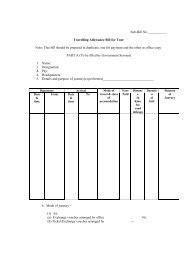Guidelines for Safety Inspection of Dams - Central Water Commission
Guidelines for Safety Inspection of Dams - Central Water Commission
Guidelines for Safety Inspection of Dams - Central Water Commission
Create successful ePaper yourself
Turn your PDF publications into a flip-book with our unique Google optimized e-Paper software.
A study <strong>of</strong> the seismic events that have occurred in the past may<br />
be made and compared with the seismic events occurring during<br />
the period after construction <strong>for</strong> any particular variations in the<br />
pattern and intensity in the earthquake occurrence and their<br />
impact on the reservoir and dam stability.<br />
4.4.2.2 Clay shale foundation<br />
Clay shale is a highly over consolidated sedimentary rock<br />
comprised predominantly <strong>of</strong> clay minerals, with little or no<br />
cementation. Foundations <strong>of</strong> clay shales, particularly those<br />
containing montmorillonite, may be highly susceptible to<br />
expansion and consequent loss <strong>of</strong> strength upon unloading. The<br />
shear strength and the resistance to de<strong>for</strong>mation <strong>of</strong> clay shales<br />
may be quite low and high pore water pressures may develop<br />
under increase in load. The presence <strong>of</strong> slickenside in clay shales<br />
is usually an indication <strong>of</strong> low shear strength. Prediction <strong>of</strong> field<br />
behaviour <strong>of</strong> clay shales should not be based solely on results <strong>of</strong><br />
conventional laboratory tests since they may be misleading. The<br />
use <strong>of</strong> peak shear strengths <strong>for</strong> clay shales in stability analysis<br />
may be unconservative because <strong>of</strong> non-uni<strong>for</strong>m stress<br />
distribution and possible progressive failures. Thus, the available<br />
shear resistance may be less than if the peak shear strengths<br />
were mobilized simultaneously along the entire failure surface.<br />
In such cases, either greater safety factors or residual shear<br />
strength should be used.<br />
4.4.2.3 Karstic foundation<br />
‘Karst’ is a general term <strong>for</strong> terrain in which surface and<br />
subsurface features, especially the relief and the drainage are<br />
directly related to the existence <strong>of</strong> bed rocks that are notably<br />
soluble in water. Karstic foundation can start creating problems<br />
even after dam construction. In Karstic and limestone region, it<br />
is essential to investigate whether the seepage losses are large<br />
so as to defeat the purpose <strong>of</strong> the project and also whether the<br />
water seeping around and beneath the dam itself does not<br />
imperil the safety <strong>of</strong> the structure. Observations <strong>for</strong> development<br />
in such foundation, like chemical analysis <strong>of</strong> seepage water<br />
downstream <strong>of</strong> the dam <strong>for</strong> lime content etc., may be carried out.<br />
4.4.3 Embankment dams<br />
4.4.3.1 Liquefaction<br />
20


